Patio Drainage Options – Installation, Maintenance, and Ideas
Anyone who’s ever dealt with a flood knows the value of proper drainage. Whether from a downpour, a burst pipe, or another type of flood, drainage, including patio drainage options, will eventually be an issue. When it comes to your patio, ensuring a fully functioning drainage system will keep the water where it should be and protect your home’s foundation from water damage.
Patio drainage options are the choices you make about the direction of stormwater and runoff on your property. Improper drainage can leave standing water on your patio and cause long-term damage. Avoid future damage and maximize the use of your outdoor space by including a patio drainage system in your construction plans.
Read on to delve into various effective solutions for managing water flow in your outdoor spaces. Learn about innovative techniques and materials that can enhance the functionality and beauty of your patio while safeguarding your property’s foundation. Discover how integrating the appropriate water management system can transform your outdoor area into a thriving, inviting, and well-protected extension of your home.
Why does your patio need a drainage system?
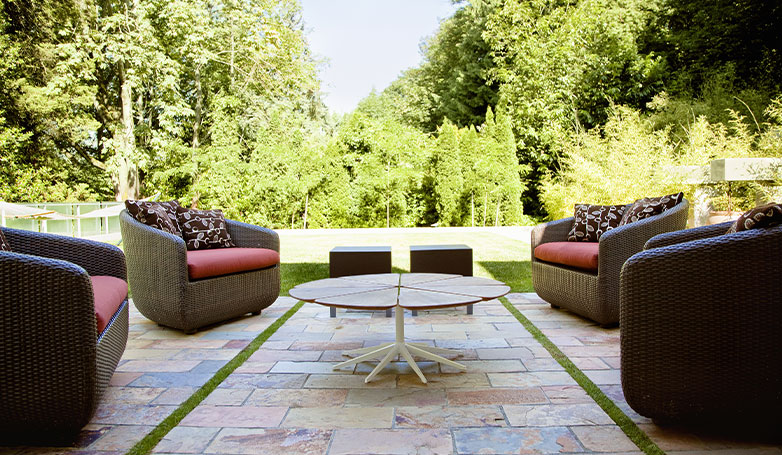
Whether you have an existing patio with standing water after a storm or you’re planning to construct the patio of your dreams, proper drainage should be a priority. If you wanted standing water on your patio, you’d have built a pool.
Ensure the health and longevity of your patio and home by installing and maintaining a proper drainage system. Your foundation benefits from the protection, and your wallet is spared expensive repair costs to fix avoidable damage. When you question whether your plan is sufficient, consult the experts.
| what | Consequences of Poor Patio Drainage |
|---|---|
| Erosion | Without a system to keep water in the right place, it can erode the soil under your patio. If too much soil washes away, your patio may become unstable and dangerous to use. |
| Water Damage | Poor drainage allows water to seep into your foundation, crawlspace, or basement, creating the potential for water damage. A damaged foundation puts your entire home at risk. |
| Insect Invasion | Standing water attracts insects, particularly mosquitos, which are enough to ruin any outdoor experience. |
| Mold | Poor drainage seeping water into basements or crawlspaces will create mold, leading to poor air quality and damage to structural elements. It also causes mildew, which could damage your pavers. |
| Drowned Plants | Plants need water, but too much will kill them. Poor drainage can cause root rot and plant death. |
What are the main patio drainage options?
Here are some options for draining water from your patio. Be sure to watch the videos for better understanding!
Slope
Why not use nature’s advantages when designing your outdoor space? If you set a proper slope and grade of at least a quarter-inch per linear foot, water should flow away from the areas you need to protect naturally without much more work on your part.
French drain
If your patio site doesn’t have enough natural drainage, consider adding a French drain, one of the effective patio drainage options, to channel the water where you want it. A French drain is a covered trench holding a perforated pipe and aggregate (gravel) to redirect water.
A French drain is an excellent option if you’re concerned about the aesthetics of your patio. You can match the aggregate to the rest of your patio, and the drainage trench adds an attractive border to your outdoor area.
Permeable pavers
For your patio, permeable pavers are another way to integrate drainage into your aesthetic design. Take advantage of the land’s natural water absorption for sustainable landscaping choices. You also have the option to use permeable grass pavers, which incorporate living plant material to help harvest and recycle rainwater while preserving green space. You can also include permeable pavers in French drains.
Common patio drainage problems and solutions
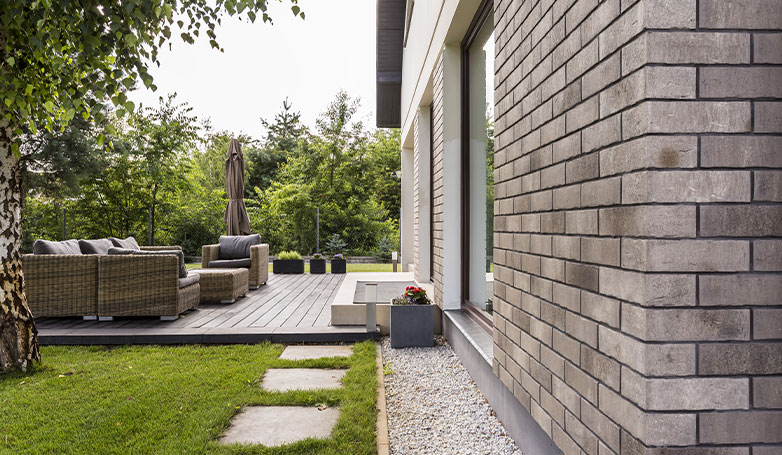
These are some patio drainage problems you may have.
Improper pitch
A level patio may seem appealing, but it can become a haven for water accumulation and subsequent damage. This standing water not only poses a risk of water damage but can also lead to the growth of mold and algae, making the surface slippery and unsafe. To counter this, during the design phase, it’s crucial to integrate a gradual slope away from your home and other structures. This subtle inclination, often imperceptible to the eye, is a key design feature that facilitates proper drainage, directing water away from your patio and home foundation.
Clogged drain system
Drainage systems in older patios are particularly susceptible to clogs from leaves, twigs, and sediment buildup. Over time, these obstructions can significantly impede water flow, leading to surface water accumulation. Regular inspection and cleaning are essential, especially after storms or seasonal changes. In severe cases, professional cleaning or even system upgrades may be necessary. It’s also important to consider the surrounding landscape – trees and plants that shed leaves or needles can contribute to frequent clogs, necessitating more frequent maintenance.
Badly placed downspouts and roof overhangs
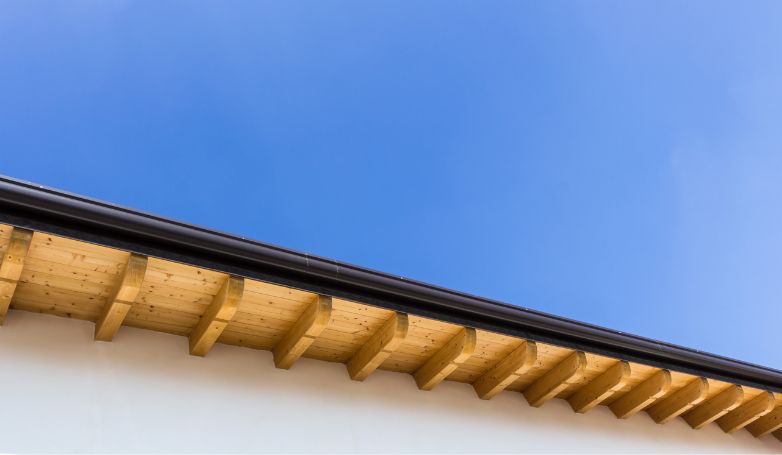
The positioning of downspouts and roof overhangs relative to your patio can dramatically affect drainage efficiency. Incorrectly directed downspouts can funnel water directly onto your patio, overwhelming the drainage system. To mitigate this, it’s essential to consider redirecting downspouts away from the patio or integrating them into the existing drainage plan. This might involve extending downspouts, installing diverters, or even incorporating rainwater collection systems that can be used for gardening purposes, turning a problem into an eco-friendly solution.
Sinking pavers
Paver erosion and sinking are telltale signs of underlying issues, often indicating the need for better patio drainage options. This is usually due to an inadequate base or sub-base that fails to provide proper support and drainage. To address this, it’s necessary to excavate the affected area, removing not just the pavers but also the top layer of soil, which may have become saturated and unstable. Replacing this with a well-compacted layer of gravel or crushed stone creates a more stable base, facilitating better water dispersion and preventing future sinking. This process not only addresses the immediate issue of sinking pavers but also enhances the overall drainage efficiency of your patio area.
10 Patio drainage ideas
Efficient patio drainage is essential for preventing water accumulation, erosion, and potential damage. Explore these 10 patio drainage ideas to enhance both functionality and aesthetics in your outdoor space.
1. Dry creek bed xeriscaping
Dry creek bed xeriscaping not only directs stormwater efficiently but also enhances your garden’s aesthetics with minimal water usage. By arranging rocks in varying sizes, you create a visually pleasing and functional channel for rainwater. This method offers a natural, low-maintenance solution that controls water flow and reduces erosion risk. Incorporating solar lights adds a captivating element to your landscape, making it a feature that shines both day and night.
2. Build a yard drain
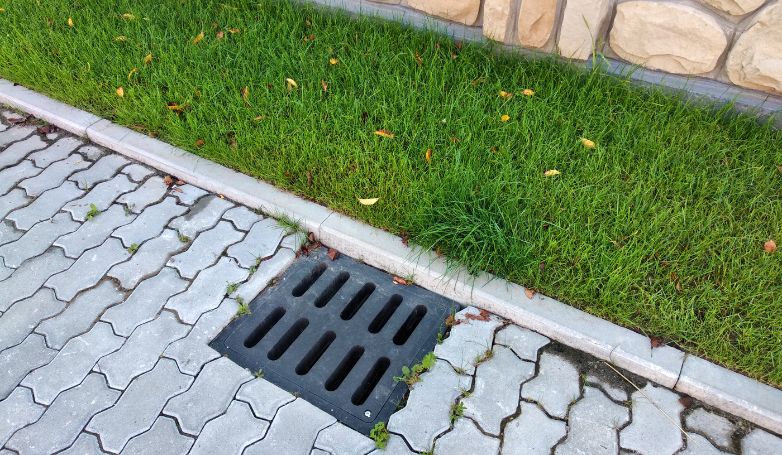
A yard drain, especially in flood-prone areas, is an effective water management solution. By installing a network of underground pipes, you can redirect excess water, thereby protecting your lawn and patio from water damage and erosion. This system can be designed to blend with your landscape, maintaining the aesthetic appeal while ensuring functionality. It’s an essential measure for areas with heavy rainfall or poor natural drainage.
3. Build a French drain
French drains offer a reliable, low-maintenance solution for patio drainage. Constructed with a trench, perforated PVC pipe, and gravel, they effectively divert water away from problem areas. Their design ensures longevity and resistance to clogging, making them an ideal choice for areas with persistent water accumulation. Additionally, French drains can be disguised under landscaping, preserving the aesthetic integrity of your outdoor space.
4. Replace concrete with drainage materials
Replacing impermeable surfaces like concrete with permeable pavers is a strategic move to combat waterlogging. These pavers allow water to seep through, reducing surface runoff and promoting natural water absorption. This approach not only resolves drainage issues but also enhances the visual appeal of your patio, offering a practical and aesthetically pleasing alternative to traditional paving materials.
5. Install a rain barrel
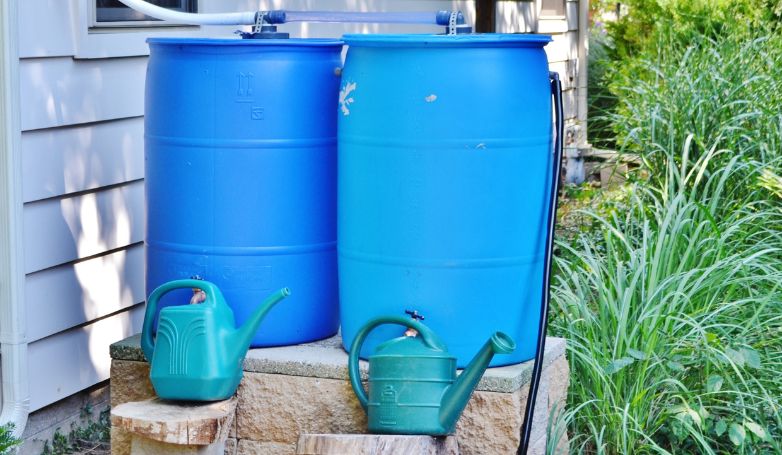
Utilizing rain barrels is an eco-friendly way to manage excess water from downspouts. By collecting and repurposing this water for your garden, you conserve resources and reduce runoff. However, it’s important to verify local regulations regarding rainwater collection, as some regions have restrictions. When implemented correctly, rain barrels can be a practical and sustainable addition to your home’s water management system.
6. Install a catch basin
Incorporating a catch basin near gutter downspouts is a practical patio drainage option to manage stormwater effectively. It captures and redirects excess water into a drainage system, preventing pooling and protecting your home’s foundation. This solution is particularly useful in areas with heavy rainfall, ensuring that water is efficiently channeled away from your property, thereby minimizing the risk of water damage.
7. Build a dry well
For properties experiencing high volumes of stormwater, a dry well serves as an excellent drainage solution. This underground structure, filled with rocks, acts as a natural reservoir, absorbing and dispersing water gradually into the soil. It’s an effective way to manage large amounts of water, preventing flooding and soil erosion, and is particularly useful in areas with limited surface drainage options.
8. Use downspout extensions
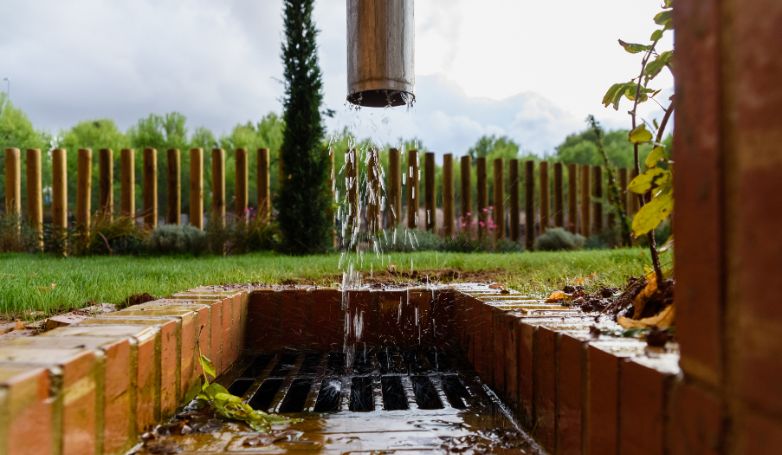
Downspout extensions are a simple yet effective way to enhance your home’s drainage system. By extending the reach of downspouts, they effectively divert water away from the foundation, reducing the risk of water damage. This solution is particularly useful in areas where the existing downspouts are insufficient to handle the volume of stormwater, providing an easy and cost-effective way to improve water management.
9. Add a channel drain
When considering patio drainage options, channel drains emerge as a highly practical solution for redirecting water flow, particularly in situations where the current drainage proves insufficient. These drains offer a versatile choice, allowing strategic placement to guide water away from problematic zones, thereby safeguarding your patio and garden against potential water damage. Channel drains can seamlessly integrate into your existing drainage system, providing an effective enhancement to ensure optimal water management for your outdoor spaces.
10. Use permeable pavers on paths as drainage
Incorporating permeable pavers over a French drain system is an innovative way to manage patio and lawn drainage. These pavers allow water to percolate through, reducing surface runoff and protecting your foundation from water damage. This method not only improves drainage but also adds aesthetic value to your outdoor space, creating functional and attractive walkways that complement your landscape design.
Popular patio drains and drainage products
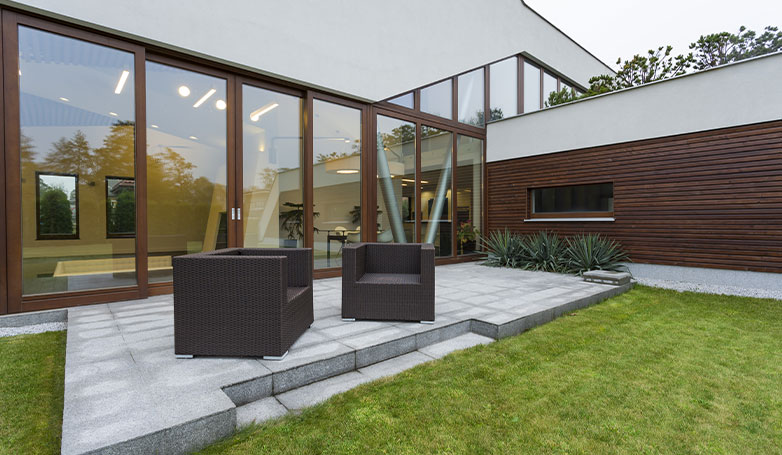
Paver size drain grate
This 6”x6” insert fits 3” and 4” drainpipes and is perfect for adding a drain to any drainage system. Reviewers gave overwhelmingly positive ratings, saying they liked the look and the ease of installation. The design also allows easy grate removal to clean and maintain your drain.
Easy trench drain channel with stamped steel grating
This easy 3-inch interlocking trench system is a popular choice for anyone wanting to add a channel drain to their yard or patio drainage system. The kit has five pieces, including two end caps and the bottom outlet adapter. Customers said it was easy to use and worked well.
Geo grid permeable base
The geogrid design is perfect for either sloped or flat land. The pockets allow you to choose loose aggregate or soil and grass seed. The recycled polyethylene grid virtually eliminates erosion and is an excellent choice for poor or unstable soil areas.
Interlocking patio deck tiles
Ensure your patio works with your drainage system with these interlocking patio deck tiles. They allow water to drain underneath, and customers love how fast and easy it is to use them. The set contains nine 11.75”x11.75” tiles.
Catch basin drain kit
Why worry about designing a catch basin when you can use this ready-made option? Convenience meets function with this catch basin drain kit. Reviewers said it was easy to use and worked as expected.
Maintenance Tips for Patio Drainage
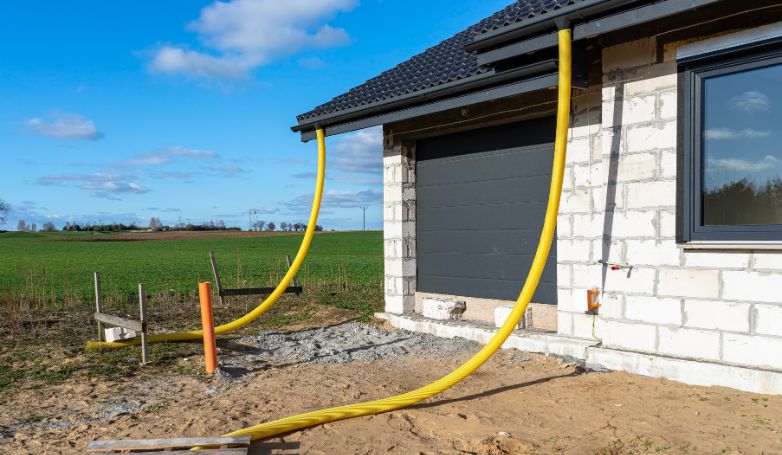
To ensure your patio drainage system remains effective and prolongs its lifespan, regular maintenance is crucial. It not only prevents major repairs but also keeps your outdoor area safe and aesthetically pleasing. Here’s a breakdown of essential maintenance practices:
Regular Cleaning and Inspection
Maintaining a clean and functional drainage system is vital for its longevity. Regular cleaning prevents blockages, while routine inspections can identify potential issues before they escalate into major problems. Here are some steps to follow:
- Debris Removal: Regularly clear leaves, dirt, and other debris from your patio surface and drainage outlets. This prevents blockages and ensures smooth water flow.
- Inspect Drain Channels: Regularly inspect drain channels and grates for any signs of damage or obstruction. Cracks or breaks can hinder the functionality of your drainage system.
- Check for Clogs: Use a plumber’s snake or a high-pressure hose to clear any clogs within the drainage pipes. This helps maintain optimal water flow.
- Surface Assessment: Regularly assess the patio surface for any pooling water, which can indicate issues with the slope or drainage efficiency.
Seasonal Maintenance Checklist
Seasonal changes can significantly affect your patio’s drainage system. Each season brings its unique challenges, requiring specific maintenance tasks to keep the system in optimal condition. Here’s what you should focus on each season:
- Spring: Post-winter, check for any damage caused by freeze-thaw cycles. Clear winter debris and ensure that all components are functioning properly.
- Summer: Ensure that the system is free from blockages and can handle summer storms. This is a good time for a thorough cleaning.
- Fall: Clear leaves and other fall debris that can cause blockages. Preparing for winter, ensure that the system is in top condition to handle melting snow and ice.
- Winter: Protect exposed pipes from freezing. Inspect the system before the first freeze and conduct any necessary repairs.
Troubleshooting Common Issues
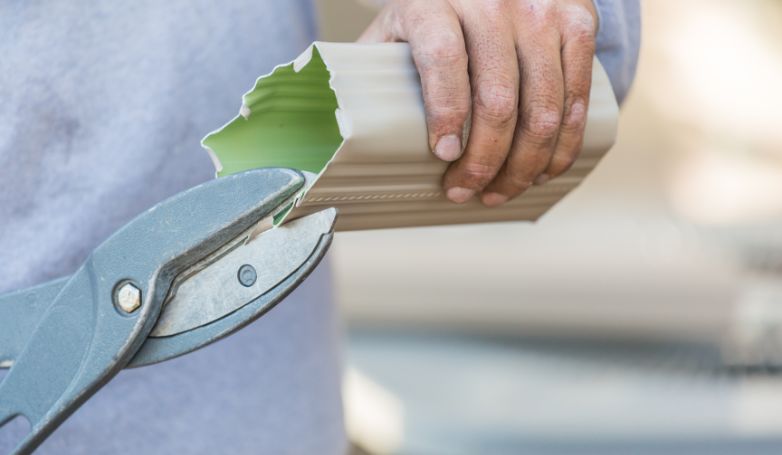
Even with regular maintenance, issues can arise with your patio drainage system. Being able to identify and troubleshoot common problems helps maintain the system’s effectiveness and prevents long-term damage. Here are some common issues and their solutions:
- Water Pooling: If water is pooling on your patio, check for clogged drains or improper slope. Adjust the slope or clean the drains as necessary.
- Slow Drainage: Slow drainage may indicate a clog or a problem with the patio’s slope. Clean the drainage system and reassess the slope.
- Odor Issues: Bad odors can arise from stagnant water in the drainage system. Regular cleaning and ensuring proper flow can mitigate this issue.
- Visible Damage: Cracks or damage to drainage components require immediate attention. Replace or repair damaged parts to ensure continued functionality.
Adhering to these maintenance practices will help you avoid common pitfalls and ensure that your patio drainage system continues to function effectively for years to come.
Conclusion
It’s important to know your patio drainage options and to pick one that suits your location. Proper patio drainage will help protect your home’s foundation and basement from water damage while giving you full use of your outdoor space. No matter what style you choose for your patio, there are drainage options to fit seamlessly with your design.

